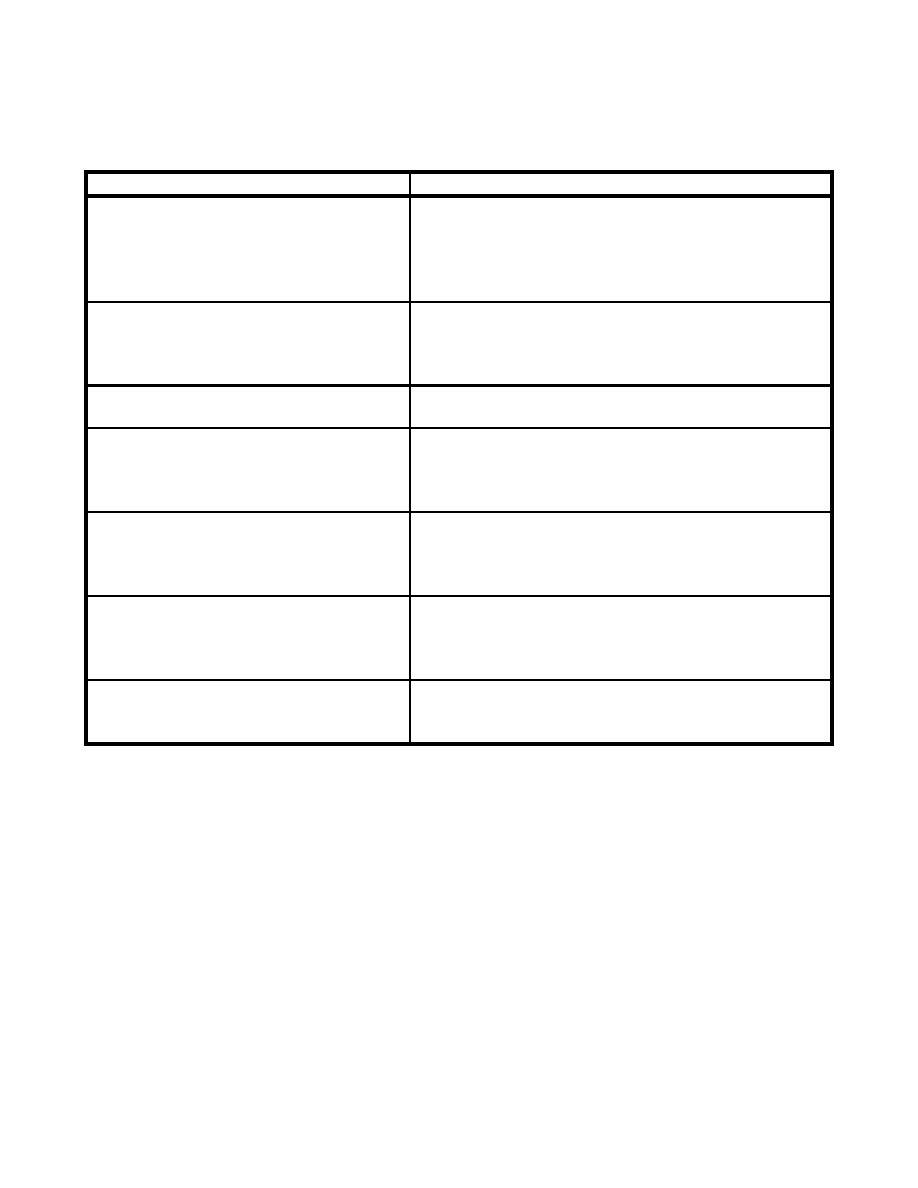
UFC 4-159-03
3 October 2005
Table 5-2. (continued) Anchor Characteristics
(b) Driven-Plate Anchors
CHARACTERISTICS
NOTES
Size and design of anchor are
These anchors have been used in a variety of
selected to provide adequate holding, soils from soft mud to hard coral. A driving
to allow driving, and to provide
analysis is recommended for hard soil, because
adequate structural capacity.
the anchor must be able to be driven in order to
work.
Multi-directional.
Can be used on short scope, since the anchor
resists uplift forces. One plate anchor may be
used to replace several drag anchor legs, since
the anchors are multi-directional.
Anchors designed for the soil type.
Anchors designed for the soil engineering
characteristics at the site.
Adequate sediment required.
A minimum of several fluke lengths of sediment is
required to provide for keying and allow the
anchor to hold (NFESC TR-2039-OCN, Design
Guide for Pile-Driven Plate Anchors).
Anchor is fixed.
The anchor will not drag, so this type of anchor is
well suited to locations with limited mooring area
available. The anchors cannot be recovered or
inspected.
Proof loading recommended.
Pulling the anchor at the design load in the design
direction will help key the anchor and assure that
the soil/anchor interaction provides adequate
holding.
Installation equipment.
Mobilization can be expensive, so installing a
number of anchors at a time reduces the unit
installation cost.
104



 Previous Page
Previous Page
